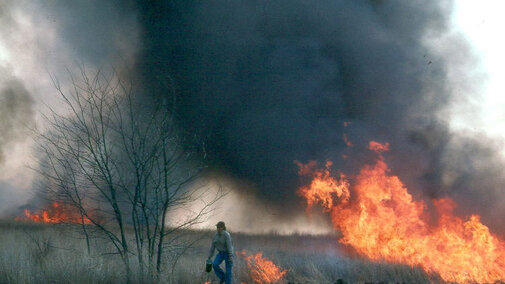Prescribed burning CRP or pasture can improve stands, prepare them for interseeding, control weeds and trees, enhance wildlife habitat, and improve forage quality.
But it must be done safely.
Wildfires emanating from what was a controlled burn can easily develop and spread under hot, dry, and windy conditions, and when isn't it windy in Nebraska?
Fire is used in CRP or other fields overgrown with dead growth from previous years. This mulch can smother plants and new seedlings, causing stands to thin. Fire removes this mulch, enabling stands to thicken, and it improves wildlife habitat. Fire also can reduce the invasion of woody plants like cedar trees, weeds, or cool-season grasses moving into warm-season grasslands. These less desirable plants are injured or killed by a well-timed burn. This can be especially useful for summer pastures.
Timing is important to a successful burn. Right now is a bit too early to burn warm-season grasses. Burning now will open up the ground for weeds to invade, soil to erode, and moisture to evaporate. The best time to burn warm-season grasses is when they just start to grow, usually mid-April to early May. Burning then will result in rapid greenup and thickening of desirable warm-season plants.
Related Resources
If you're considering a prescribed burn to improve pasture and CRP acres, be sure to check out these resources from Nebraska Extension.
- Grassland Management with Prescribed Fire
- Conducting a Prescribed Burn and Prescribed Burning Checklist
Be careful, though.
- Never burn unless weather conditions, topography, and other factors enable you to control the fire.
- Make sure your burn is legal: You must get a burn permit from your local fire chief.
- Never burn unless someone experienced in prescribed burning is part of your burning crew.
Fire is a valuable tool, but like any tool, when used incorrectly it can be dangerous.

